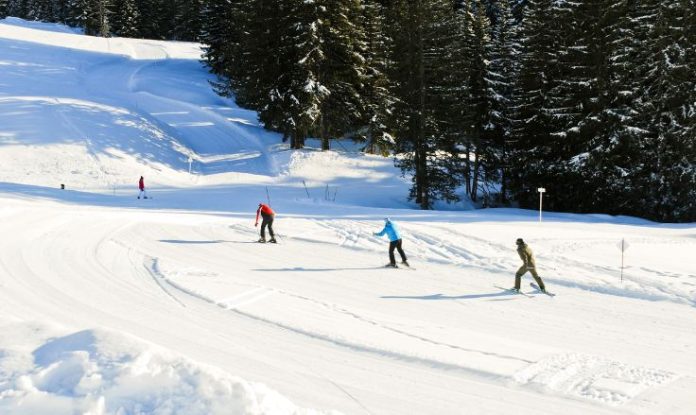If you think that water skiing is a sport that is very safe then you are wrong. Many injuries such as hamstring, quadriceps, and knee strains or tears can occur while you are doing water skiing. Fractures and ankle injuries and neck and middle and low back injuries are also not uncommon.
To prevent these injuries you can take help of certain preventive equipment.
Maximum water skiers suffer from knee joint injuries. To prevent these injuries you should carry on a good strengthening and conditioning program. The equipment Swissball can be of great help in doing such strengthening exercises. Take the Swissball and kneel it on your knees.
Some of you might have corrective lenses, for skiers like them there are special glasses available that conform to the bridge area around the nose without sharp edges. If you use them then you can reduce the risk of facial injuries that can occur with standard glasses if you fall on your face.
You should use a leg spray protector to eliminate the hydrodynamic abrasion that occurs during slalom skiing in a course at high speeds and increased inclination of the skier.
While skiing it is absolutely necessary that you should wear gloves in the hands to prevent blisters that might occur from abrasions from the ski handle.
You must always wear flotation vests and have bright-colored wet suits. These are essential to identify a skier after a fall. You should use a slalom ski that is aided with a trailing fin.
Always be sure to use water-ski bindings which are designed to secure the foot to the ski and release under certain conditions. They are usually constructed from a flexible polymer for aiding security.
Always check the tightness of the binding. You must select weight, height, and ability on a chart, which yields the recommended binding release setting.
Make sure that the handle of the ski has got no pinch points that could hurt a skiers fingers during a fall. If you are planning to go for ski jumping then do not forget to have a headgear properly placed to protect you from head injuries.
Even otherwise it is better to have a helmet on, because you never know when you will fall and might hurt your head and neck.
Take special care to see that the boat meets certain dimensions, horsepower, wake and water-ski equipments. Always check the towrope because in some water skiing the skier is required to be towed by the foot.
If in such a case the skier falls and the towrope does not disengage from the skier then the skier can suffer from a serious injury. The towboat must have a safety observer and a person who controls the towrope release when toe tricks are being performed.
If the boat does not have pylon then check whether the boat has a bridle rope or cable attached to the transom of the towboat and the rope attached to the float/pulley.
If you are skiing in cold water or in cold weather then it is better that you always wear a dry suit. A dry suit will save you from hypothermia problems. This is a problem from which many skiers suffer and it can even lead to death in many cases.
Next time when you are out on a skiing trip, try to abide by the above guidelines; you are sure to get the most fabulous skiing experience.

